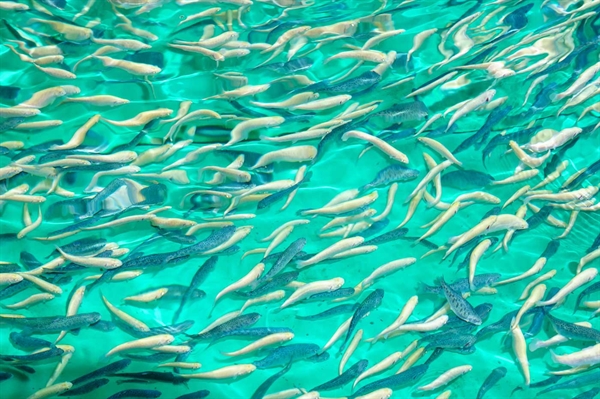
According to the latest Census of Aquaculture, sales of Virginia aquacultural products totaled $113 million, the largest amount on the East Coast and the fifth largest in the U.S.
The bounty of seafood produced by Virginia aquaculturists and fisherman is the topic of an ongoing webinar series titled “Eat More Fish.”
The goal of the series is to present information about the status of Virginia’s seafood sector, offer insight on how eating fish supports healthy lifestyles, and provide food preparation tips.
The free webinars are co-hosted by Virginia Cooperative Extension, Virginia State University, Virginia Tech, the Virginia Seafood Agricultural Research and Extension Center, and the Virginia Seafood and Virginia Marine Products Board.
“This series we’ve developed is designed to help (consumers) understand why we should eat more fish, why fish is good for you and the science behind it,” said David Crosby, a fish health specialist for VSU’s aquaculture program.
“We’re going to talk about aquaculture and fisheries development in Virginia and how it relates to aquaculture, which is important,” he said. “That’s the reason we’re doing this. We want folks to eat more fish, and we want them to eat fish that’s grown in Virginia.”
The first installment of the four-part series, “Know Your Virginia Seafood,” was held June 29 and featured a panel discussion led by Crosby.
Susan Prillaman, a Bedford County-based Extension family and consumer sciences agent, started the discussion by highlighting the nutritional benefits of eating fish.
Prillaman explained that fish are high in omega-3 fatty acids, which help improve heart health. Fish also are low in cholesterol and saturated fat, and are high in calcium, iron, zinc and vitamins B and D, among other vitamins and minerals.
Mike Hutt, executive director of the Virginia Marine Products Board, provided industry details about Virginia’s blue catfish population. Jonathan van Senten, an Extension specialist at the Virginia Seafood AREC in Hampton, concluded the webinar with market updates.
“Seafood is experiencing an increase in consumption or preparation at home, which is a really positive trend for the industry,” van Senten said, citing a National Institute of Food and Agriculture study that monitored seafood-related consumer behavior throughout the COVID-19 pandemic.
“We’re seeing some encouraging trends emerging from the data, and also seeing a return to seafood being eaten away from home now that many closures have passed.”




